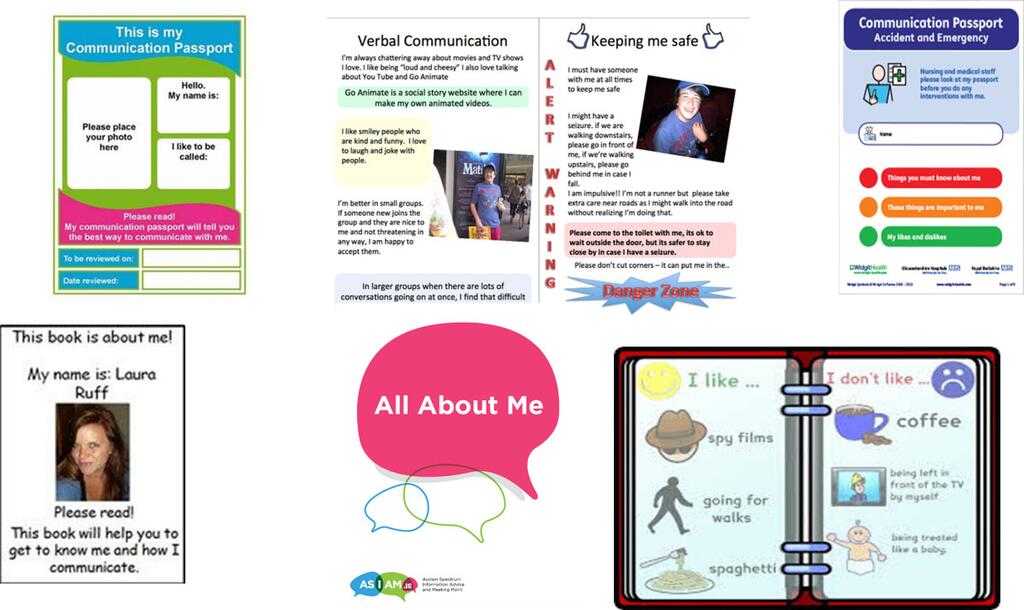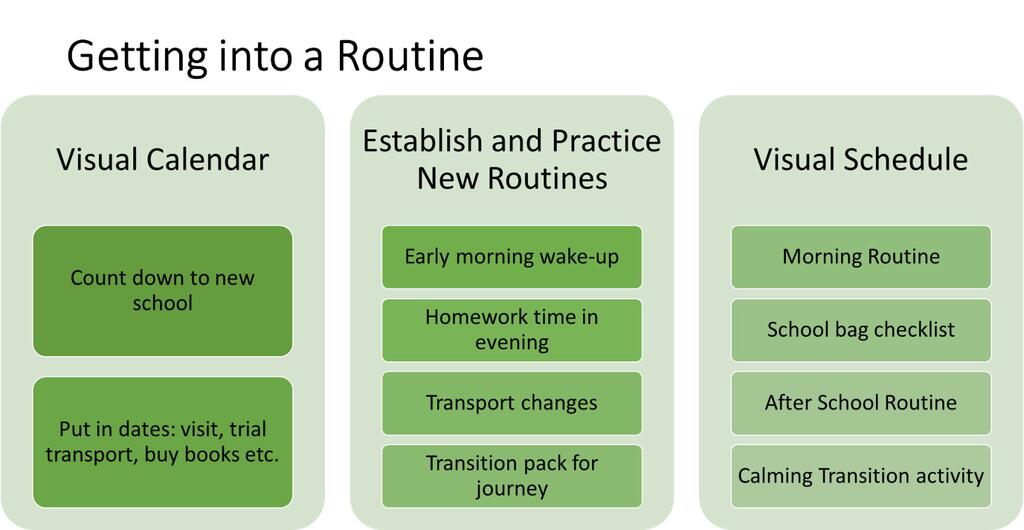Moving from Primary School to Secondary School
Moving from primary school to secondary school is an exciting time for many. But for young people and those around them, it can also be an anxious time.
For a lot of young people, beginning secondary school is a huge life event. It can symbolise entrance into young adulthood. They are also leaving an important part of their lives behind and whether or not they are conscious of it, endings can be difficult. This transition can be difficult for parents or guardians too. It is a change in routine for the household, which often comes with its own challenges.
Below are some suggestions and strategies to help you plan as a family for this change.
Step 1: Share information with the new school
- Clinical assessments or reports - let the new school know about any medical concerns/history.
- Teacher reports from the old school.
- Suggest the old and new teachers talk.
- If school needs further support they can contact the young person's CDNT.
- Ask the school about language exemption and resource hours.
- Talk about special needs assistant (SNA) support.
- Identify a point of contact for the child. This could be the year head. Also ask of the possibility of a mentor/peer support for your young person.
- Let the school know about your young person's learning style and areas of strength and need.
Step 2: Create a transition passport
- This is a brief summary of strategies to support your young person. The transition passport can support them with preparing for the transition and to feel like the new people will know about them and their preferences.
- Ask your young person's primary school if they have already completed their transition passport. If the primary school hasn't, write it in the young person’s voice. It should be less formal, compared to the reports. Complete the transition passport with your young person, if possible.
- Distribute it to all their new teachers.
- There are different types of transition passports, depending on your child’s strengths and needs. See below for some examples.

Step 3: Other ways to help the transition
- Make a social story
- Drive or walk past the school.
- Talk about the school.
- Practice the journey to and from school. Agree on a pick up/ drop off point at the school, or plan out the transport options to/from school.
- Make some time to validate the way your young person might be feeling about this move and change.
- Complete a ‘transition workbook’ with your child.
- It can be easily adaptable to your child’s needs and language abilities.
- It helps your child to prepare for change in small steps.
- Complete this before your child moves school, so they are more prepared.
Step 4: Investigate the school environment
Find out the following information on school website or by contacting the school:
- Get a map of the school and highlight the key areas. For example, the locker space, lunch area, resource room, sensory room, accessible bathrooms, and pick up/ drop off points at the school.
- Find out where the 1st year classes will be held.
- Locate the labs and practical rooms.
- Find out how accessible the school is by identifying where they have stairs and/or a lift. Make sure the lift is working.
- Find out where the student lockers are and what type of locker and size they are.
- Ask if students have a base classroom or move throughout the day.
- Find out what the timetable and lunch routines are.
- Ask if there is unstructured or free time for students.
- Ask what the teachers’ and coordinators' names are.
Step 5: Visit the school before the school year starts
- Look around the school.
- Use a map of the school to find your way around.
- Meet teachers if possible. Identify a support person that your young person can talk to/go to if upset.
- Take photos of classrooms, the toilets, the yard, and teachers, if possible.
- Bring a snack and eat where your child will be eating next year, and use the toilets.
- Afterwards, create a picture book using photos taken on the visit.
- Get your child involved by allowing them to glue in photos into their picture book.
- Agree with the school what allocations your young person will have, for example, if they find the canteen overwhelming, can they be let out class a few minutes earlier?; or if they are late to class, that they wont be penalised/ given out to.
Step 6: Engaging with the environment and curriculum
Consider the following supports and requirements for your child:
- Assistive Technology (AT)
- If a young person has existing assistive technology sanctioned from primary school, this should go with them to secondary school. It is important for parents to link with the primary school/ SENO so your young person child doesn't have a break with using AT when they transition to secondary school.
- Ask if it would be possible to communicate with teachers or if homework could be shared through a mechanism like Aladdin.
- Emphasising the position of the seat in the classroom (e.g. independent work station, sitting at top or back of class, or sitting at a desk alone) may be helpful.
- Ask about what exam accommodations and supports are in place in the school.
- Explain your young person's sensory needs. Referring back to what is included in their transition passport here is key. The primary school will know what their preferences are and will have specific information about how each sensory preference was managed in primary school. Something to consider also is how the secondary school environment can adapt to your young person's sensory needs. For example, if they are sensitive to noise, can they be let out from class early; is there a possibility for them to leave the classroom when it becomes too noisy; making the teachers aware so the can control their voice level accordingly).
- Talk to the school about how your child best takes in information. Think about if it is visual, auditory, or through a list.
- Think about tools that might help like visual cues including using coloured paper or a ruler under a sentence being read. Highlighters can be very useful too.
- Think about using visual timers like sand timers or digital timers at home.
- Talk to the school about reducing visual stimuli. For example, explain the importance of having one subject on the board at a time or not using a phone.

See this example from Middletown Centre for Autism on Packing a School Bag.
Key contacts in the school
- Special Educational Needs Organiser (SENO)
- Principal
- Year Head
- Resource Teacher
- Special Needs Assistant (SNA)
For more information:
- AsIAm Finding a School Place
- Enable Ireland Strategy on Learning to Organise for School
- Middletown Centre for Autism Starting a New School
- Middletown Visual Schedule: Homework schedule
- Middletown Visual Schedule: Packing my schoolbag
- Middletown Visual Schedule: Things to remember for school
- NCSE Changing Schools: Moving from Primary to Post Primary School
- NCSE Supporting Students with Special Educational Needs to make Successful Transitions